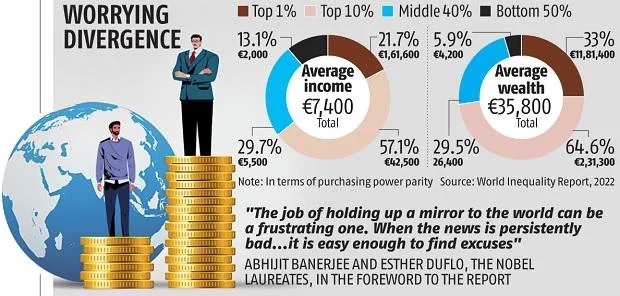7667766266
enquiry@shankarias.in
The latest edition of the World Inequality Report has confirmed that the world continues to run down the path of inequality.
To know more about the World Inequality Report 2021, click here

Reference